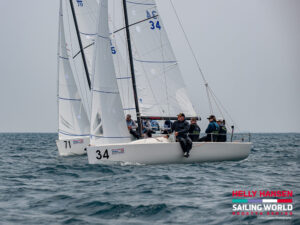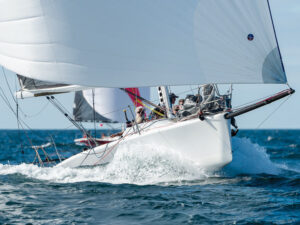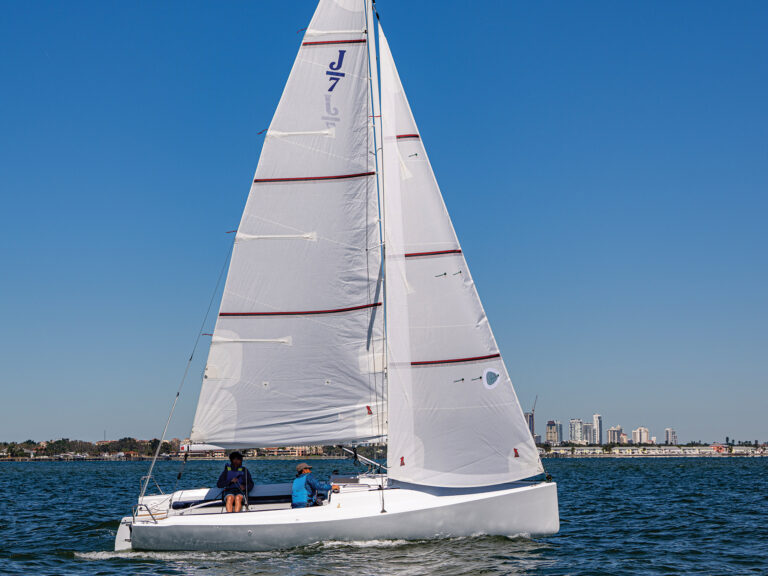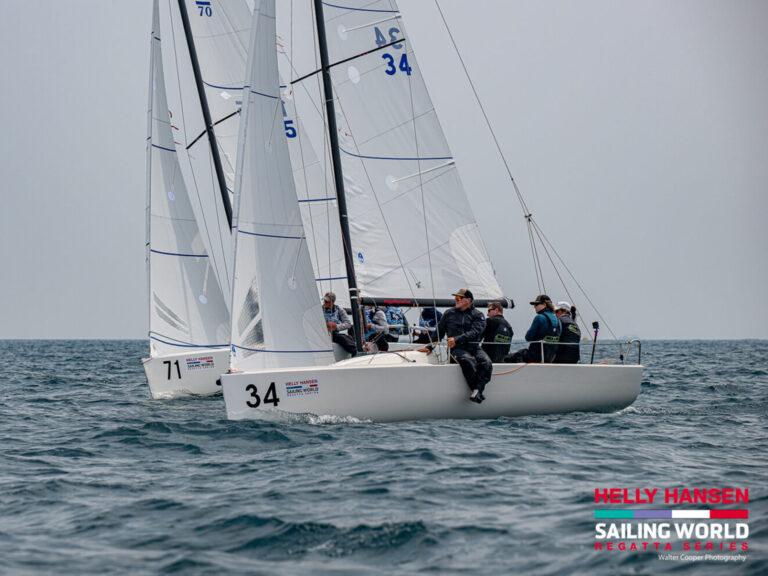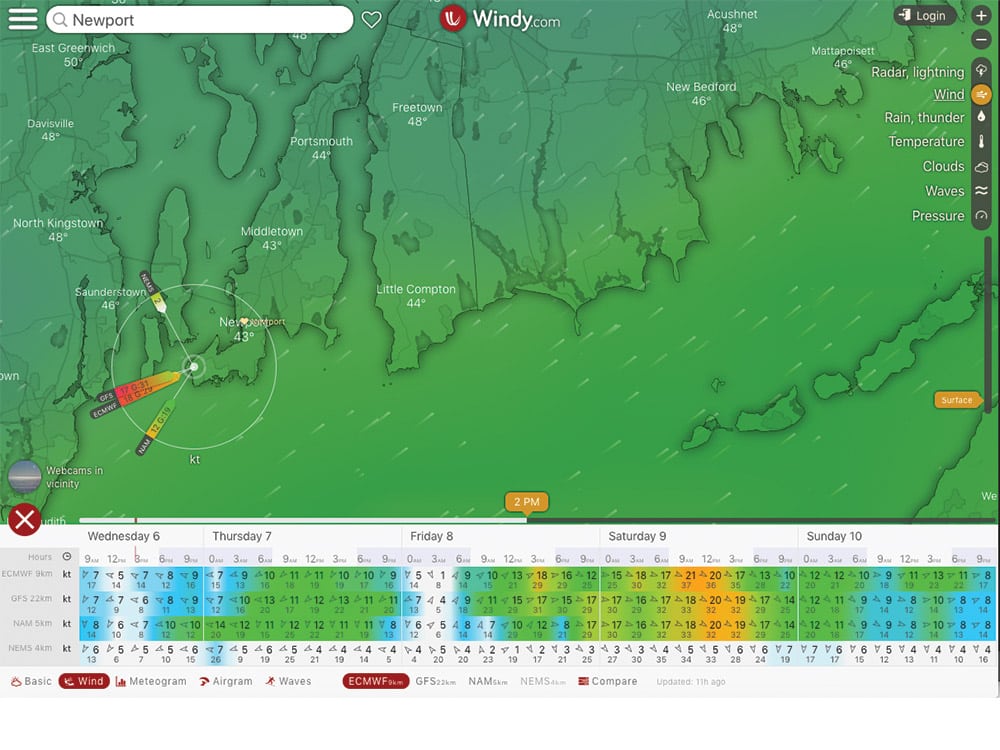
One of the many great things about sailing is the ability to prepare in advance. The more you put into it, the more success you will have. Weather forecasting is one area that is increasingly being used by top sailors who once exclusively relied upon professional weather services. As the quality of available data and online resources has improved, along with sailors’ access to it, using the right information in the right way can be an important part of racing success. And it’s a fun part of getting ready for a regatta.
The importance of weather preparation varies greatly, however. For an ocean race or long passage, accurate forecasting — and using it correctly — can be the largest contributing factor for winning. On a Thursday night beer-can race, you are looking to decide what gear to wear or which headsails to leave on the dock. For the purposes of this article, I will focus on inshore-course racing, where you will most likely have shoreline influences as well as meteorological effects.
To prepare for a weekend regatta at an out-of-town venue, the first thing I do is find historical data on the prevailing wind direction and speed for the month of the regatta. Next, I will study the geography of the racing area. Look at a chart showing the elevation of the shoreline and the underwater bathymetry. Determine where the higher terrain is, and where the deeper channels are. Speculate how these relate to the prevailing wind and current directions. Even without ever sailing in a place, you can get a pretty good idea of how the wind will bend around certain land features in different wind directions. There are a few good books on the topic of land effects, including “The Sailor’s Wind” by the late Stuart Walker.
My next step is to check the tides for the racing dates and correlate this to the racing area and what local effects there might be because of depth contours. The final step that can be done well in advance is talking to any locals or friends who have sailed there before. This can be illuminating, but you should also take this information with a grain of salt. So, even months before the regatta, we have a pretty good idea of the typical conditions, current flow on race day and the geographical effects. This will help us prepare our boat for, and maybe even train for, the targeted wind speeds.
Equally important, however, is to use this research to begin to visualize the racecourse and how various tactical situations might develop.
For example, you might deduce, “If the wind is from the southwest, it looks like we need to go left, so we need to be able to hold our lane off the line.” If that’s the case, you might do some extra starting practice to help ensure you can get to the favored left side.
The next level of research happens in the days immediately before the regatta. About five days out, I start to look at the wind patterns and expected conditions during the regatta. There are several excellent online resources that I regularly use, including Predict Wind, Sailflow and NOAA.
Some have a nominal subscription fee, which I think is well worth it, because you get much more granular data that can provide a competitive advantage.
As the quality of available data and online resources has improved, along with sailors’ access to it, using the right information in the right way can be an important part of racing success. And it’s a fun part of getting ready for a regatta.
Looking at the forecasts three days out, I might see a cold front coming over the area on Saturday night. That likely means we can anticipate a light sea breeze on Saturday — this will feature the geographical lefty we previously studied — and a windy, shifty, cold northerly on Sunday. How does this impact our final preparation? I might bring some warmer clothes. And I would be thinking about how to sail conservatively Saturday, because Sunday will be quite challenging, but plays to my strength.
Now it’s Friday, the night before. We had a good practice day in conditions similar to what is expected the following day. We trained on the course area so that we could confirm the current effects and geographic shifts. Now it’s time to check in with our weather guru. I often do not pay for a professional forecast for minor regattas; I rely instead on online resources, but for a big event or a new location, having a professional forecast can very useful.
Now it’s Friday, the night before. We had a good practice day in conditions similar to what is expected the following day. We trained on the course area so that we could confirm the current effects and geographic shifts. Now it’s time to check in with our weather guru. I often do not pay for a professional forecast for minor regattas; I rely instead on online resources, but for a big event or a new location, having a professional forecast can very useful.
Typically, they will provide an hour-by-hour forecast showing a range of wind speeds and directions, and any cloud features that are associated with changes. I rely on these forecasts heavily when there is a major change in the forecast.
There are times when I ignore the forecast altogether. If the predicted weather is not matching what is actually happening, alarm bells should go off and you should go back to fundamentals.
For example, if there is a big right shift forecast for 2 p.m., just after a cloud line passes, that is actionable information. However, it’s rarely that simple, especially regarding the timing, and in the context of a short course. What if the shift arrives at 3 p.m. instead? You could be going the wrong way for the entire race. What if the shift happens on the last run to the finish? You should not base your upwind tactics around it. The key in this case is to use the cloud indicator to confirm the timing of the change, and only then do you act on it.
There are times when I ignore the forecast altogether. If the predicted weather is not matching what is actually happening, alarm bells should go off and you should go back to fundamentals. If the legs are short, the dominant factor is likely to be fleet positioning and geographic effects, not something you can divine from the forecast. Even on racecourses with longer legs, strategic or local effects can often override the forecast. For example, the forecast calls for a slow right-hand shift through the day, say 15 degrees over 5 hours. However, the left side is always better because there is a shoreline bending the wind. This effect is stronger than the slow righty, so you want to go left, even though the forecast would suggest right!
Another example is when you want to stay with the fleet. Let’s say you’re doing well and you want to reduce risk in the later races. You will rationally choose to go the same way as your competitors, even if the forecast suggests it could be the wrong way. The point is, don’t use the forecast blindly. Use the information in relation to other considerations when choosing your tactics.
I love the complexity of our sport.
There are so many bases to cover, but also many ways to develop a competitive advantage. Understanding and using weather resources is necessary for high-level success. I have enjoyed learning more about the weather, but also developing the discipline to know when to use it, how to use it, and when to ignore it. You can start by creating your own daily weather synopsis, and if the forecast ends up being wrong, just blame the weatherman.


